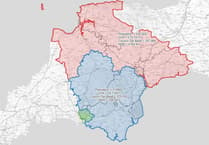THE proposal by Costcutter would bring into active use a currently-unused existing commercial unit within the town centre for retail purposes, Andrew Batterton, representing the supermarket group, told the inquiry. 'It will help to protect the vitality and viability of the shopping provision within Newton Abbot, rather than allowing retail use to leak elsewhere,' he said. Mr Batterton pointed out that the principle of the location was not an issue with the district council and he contended that it was not contrary to any policy in the Devon Plan. 'The council's sole reasons for refusing the proposal are based on issues of highway safety. The council has provided no technical information or assessment to support its reasons for refusal. 'The appellant has carried out assessments on a robust basis which leads to conclusions that the appeal site can operate as a post office or other retail use without material impact on highway safety. 'Devon County Council highways and the officers of Teignbridge Council support this conclusion having made no objection to the proposal and recommending approval respectively,' said Mr Batterton. He said Costcutter understood that closure of a post office could be a sensitive and emotional issue for local residents. However, given its location in the existing town centre, it was not appropriate to have regard to the relative merits of this site as a post office against other sites. At the start of the second day of the inquiry, Mr Batterton submitted a letter from the Post Office regarding queries raised on collections/deliveries to the post office following the proposed relocation. It stated that Insp Dower had indicated that he had been in liaison with the Post Office and been advised that there would be two additional collections/ deliveries each day. The letter from T M Stephens, network development manager, continued that he was unable to trace the source of the advice from the Post Office, but could confirm that the result of the changes would be one additional collection per day and two additional deliveries/collections a week from that already scheduled. Highway engineer Paul Lacey said that despite the many objections raised by residents and users of the main post office, the planning officers considered there were no planning policy objections. The council had subsequently agreed with Costcutter that save for policies relating to highway reasons for refusal, the proposals otherwise accorded with all other policies of the development plan. A traffic count on July 13 showed flows on Queen Street adjacent to the store varied between 7.9 and 8.8 vehicles per minute during a six-hour period. On Lemon Road they were 0.5 to 0.7 vehicles. Capacity of Urban Roads, Highways Agency, 1999 indicated that the traffic capacity of Queen Street was 950 vehicles per hour or approximately 16 per minute, and for Lemon Road approximately 600 vehicles per hour and 10 per minute. Mr Lacey said the maximum observed traffic flows on Queen Street, together with any small change associated with the change of use of the building, would have no material impact on the safe operation of this section of the street. With generally low speed vehicles in Lemon Road they were unlikely to cause any problems in relation to pedestrian movements from the Cricketfield Road car park. He continued that observations on July 13 also indicated there was a regular turnover of parked cars on Queen Street and Devon Square, with approximately two to four spaces available from the 31 spaces close to the store. Parking spaces were available in the Cricketfield Road and Osborne Street car parks while accident data from the county council indicated that no accidents were recorded on Lemon Road or Lemon Place in the past five years. 'The records show less than one injury accident per year on the sections of Queen Street, Lemon Road and Lemon Place and do not justify the safety issues suggested by the council in reasons for refusal. 'Accident data shows that there have only been two injury accidents involving pedestrians emerging from between parked vehicles, with one of them resulting from drunken behaviour,' said Mr Lacey. He agreed that two wheelchair users could not pass on the pavement in Lemon Road, but said pedestrians often walked in the road, as shown on photographs he produced, and did not feel unsafe because the few vehicles travelled slowly. Mr Lacey admitted there had been problems with delivery lorries and that in Lemon Road vehicles had had to mount the pavement to go around them. Costcutter had instructed delivery drivers to unload from the front in Queen Street and not to use Lemon Road. Problems did occur when new drivers were not familiar with the instruction and they were told to drive around until a space in Queen Street was available.



